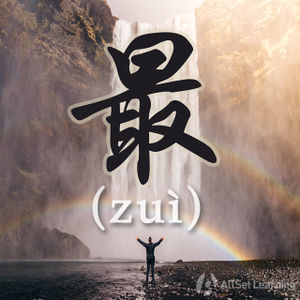Difference between revisions of "Superlative "zui""
Yangrenjun (talk | contribs) |
Yangrenjun (talk | contribs) |
||
| Line 61: | Line 61: | ||
{{Similar|Expressing "rather" with "bijiao"}} | {{Similar|Expressing "rather" with "bijiao"}} | ||
{{Used for|Comparing}} | {{Used for|Comparing}} | ||
| − | {{ | + | {{POS|Adjectives and Adverbs}} |
Revision as of 07:12, 15 June 2012
-
Level
-
Similar to
-
Used for
-
Keywords
The most common way to form a superlative (best, worst, thinnest, fattest etc.) in Chinese is to use 最 (zuì).
Basic Form
The structure is:
最 + Adjective
And now you have the superlative form of the adjective. Unlike in English, this structure is consistent for all adjectives in Chinese.
Some examples:
- 他 最 聪明。
- 你 最 胖。
- 我 最 矮。
Optional 了
Occasionally you'll also see a 了 added after the adjective. This just adds emphasis to the "-est."
最 + Adjective + 了
Some examples of that:
- 他 最 聪明 了。
- 你 最 好 了。
- 我 最 漂亮 了。
See also
- Expressing "excessively" with tai
- Positive adjectives with "-ji le"
- Expressing "rather" with "bijiao"
Sources and further reading
Books
- New Practical Chinese Reader 3 (新实用汉语课本3) (pp. 15-6) →buy



